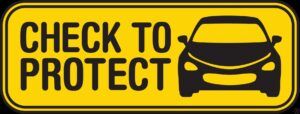Overall
- Traffic fatalities increased 1.2 percent from 2,966 in 2012 to 3,000 in 2013.
- In 2012, California’s traffic fatalities increased 1.5 percent (2,816 vs. 2,857) – still one of the lowest levels since the federal government began recording traffic fatalities in 1975. **
- California’s 2012 Mileage Death Rate (MDR) – fatalities per 100 million miles traveled is 0.88, and marks the fourth time California has been below 1.0. California is much better than the national 1.1 MDR. **
Alcohol-Impaired Driving
(Revised 1/14)
- Alcohol-impaired driving fatalities (fatalities in crashes involving a driver or motorcycle rider (operator) with a blood alcohol concentration (BAC) of 0.08 grams per deciliter (g/dL) or higher) increased from 774 in 2011 to 802 in 2012. **
- California’s alcohol-impaired driving fatality rate for 2011 remained at the 2010 rate of 0.24. California’s rate is much better than the national average of 0.33. **
- Of the five largest states in terms of total traffic fatalities, (CA, FL, TX, PA, and NC), California has the best rate.*
- As a percent of total fatalities, alcohol-impaired driving fatalities increased from 27 percent in 2011 to 28 percent in 2012. This number has remained virtually unchanged in the past three years. California is better than the national average of 31 percent. **
Drug-Impaired Driving
(Revised 1/14)
- Based on data from the National Highway Traffic Safety Administration, 38 percent of all drivers who were killed in motor vehicle crashes in California in 2012 tested positive for legal and/or illegal drugs, a percentage that has been increasing every year since 2006.
Occupant Protection
(Revised 1/14)
- In California, the percent of restrained passenger vehicle occupant fatalities (all seat positions) increased from 64 percent in 2011 to 67 percent in 2012. California is much better than the national average of 46 percent and no state is better than California. **
- NHTSA estimates that about half or 241 of the 483 known unrestrained fatalities would be alive today had they simply buckled up. **
- Passenger vehicle occupant fatalities (age 0-8) increased 40 percent from 24 in 2011 to 40 in 2012. **
Motorcycle Safety
(Revised 1/14)
- Motorcycle fatalities increased 4.6 percent from 415 in 2011 to 435 in 2012. **
- Motorcycle fatalities per 100,000 motorcycle registrations increased slightly from 51 in 2011 to 52 in 2012. This rate had been relatively steady, averaging 68 from 2005 through 2008. **
The percentage of motorcycle operators killed with a BAC of 0.08 or greater increased from 22 percent in 2011 to 23 percent in 2012. ** - The percentage of motorcycle operators killed that were improperly licensed decreased from 36 percent in 2011 to 29 percent in 2012. **
Teen Safety
(Revised 1/14)
- Drivers age 20 or younger involved in fatal crashes dropped 1.3 percent from 328 in 2011 to 324 in 2012. **
- Teen motor vehicle fatalities (age 16-19) decreased 5 percent from 189 in 2011 to 180 in 2012. Since 2007, teen motor vehicle fatalities have dropped 48 percent. **
- Teen driver fatalities (age 16-19) decreased 20.3 percent from 78 in 2011 to 79 in 2012.
Males make up 65 percent of teen driver fatalities. Since 2007, teen driver fatalities have dropped 52 percent. **
Pedestrian and Bicycle Safety
(Revised 1/14)
- Pedestrian fatalities decreased 3.9 percent from 633 in 2011 to 612 in 2012. **
- Pedestrian fatalities age 65 and older increased .7 percent from 150 in 2010 to 151 in 2011. **
- Bicycle fatalities increased 7 percent from 116 in 2011 to 124 in 2012. **
Previous Years
*Data Source ‘ Statewide Integrated Traffic Records System (SWITRS)
**Data Source ‘ Fatality Analysis Reporting System (FARS)











